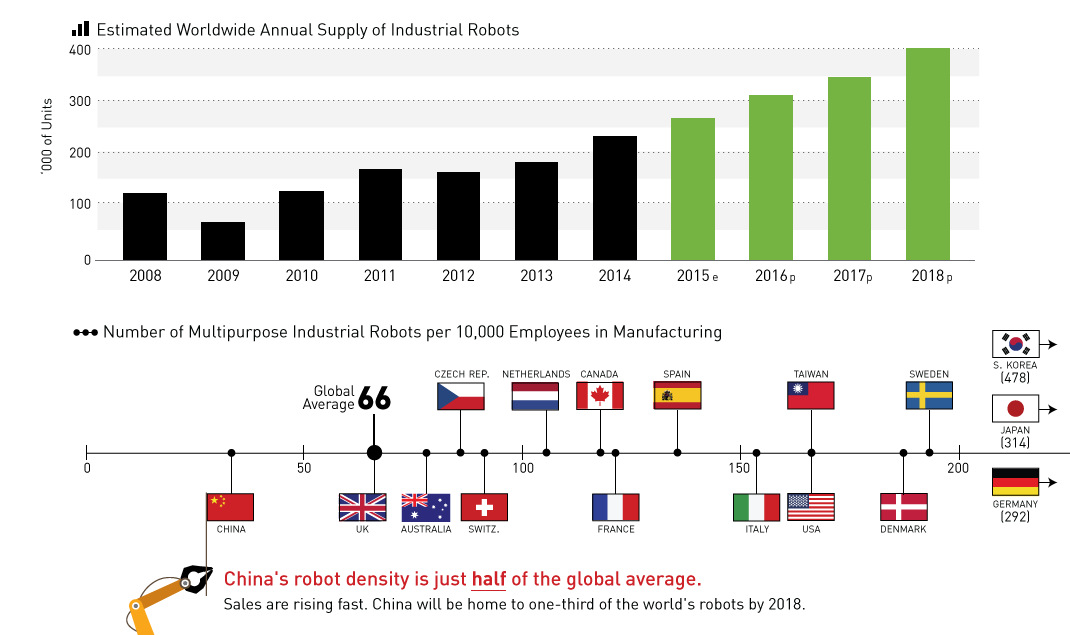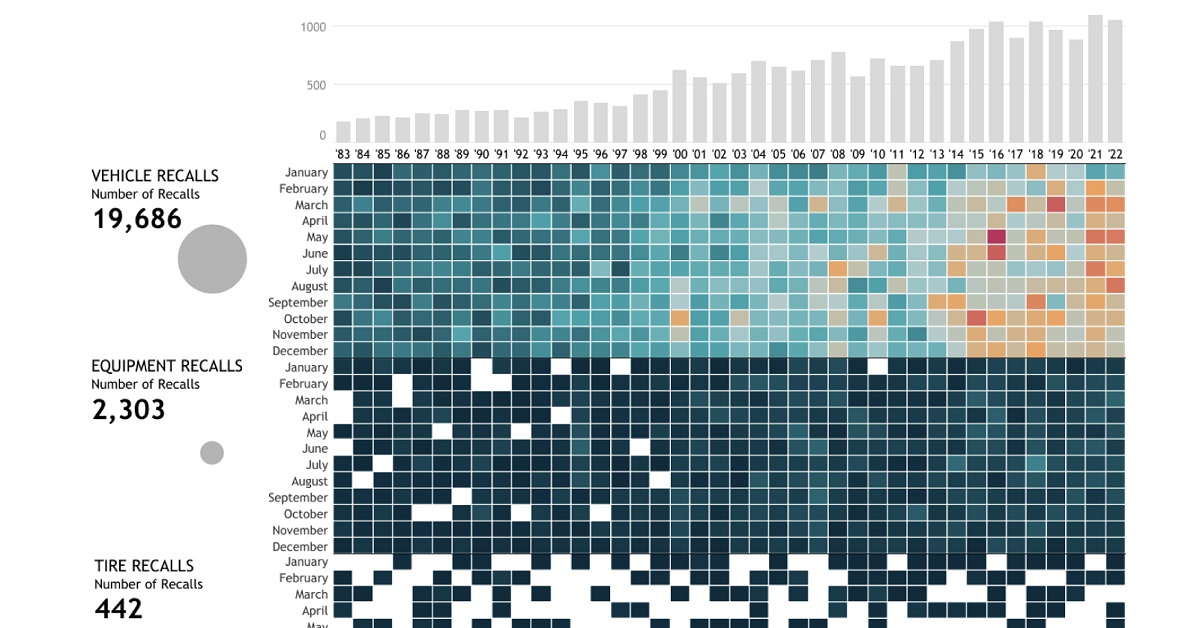The market for industrial robot installations has been on a skyward trend since 2009, and it is not expected to slow down any time soon. According to the World Robotics 2015 report, the market for industrial robots was approximated at $32 billion in 2014, and in the coming years it is expected to continue to grow at a compound annual growth rate (CAGR) of at least 15%. That means between 2015 and 2018, it’s anticipated that 1.3 million industrial robots will be installed worldwide. This will bring the stock of operational robots up to just over 2.3 million, mostly working in the automotive and electronics sectors. For how long can the global robot population continue to grow?
Robot Density
Perhaps the most interesting way to peek into the future of industrial robot installations is to look at potential sales in China. Currently, the world’s most populous nation has a density of robots that is about half of the world average, equal to just 36 robots for every 10,000 manufacturing workers in China. However, this is changing fast. It’s been the largest market for robots since 2013, and in 2014 the country bought 57,100 robots – the highest quantity ever recorded in a year. By 2018, one in every three robots in operation around the world will be in China. What will happen if China’s density approaches that of other robot industrial centers? Highly automated countries such as Germany, Japan, and South Korea all have robot densities that are multiples higher. South Korea, for example, has 478 industrial robots for every 10,000 workers – a ratio that is 13x higher than China’s. With this kind of potential for growth, it’s clear that this is only the start of the robot story. on These faulty airbags, installed by 19 different automakers including BMW and Toyota from 2002 to 2015, can explode when deployed and have led to numerous tragic accidents. Their recall affected 67 million airbags (including Honda’s vehicles above) and has been known as the largest safety recall in U.S. history. Over the past four decades, there have been over 22,000 automobile recalls in the United States. In this interactive piece, Chimdi Nwosu uses data from the National Highway Traffic Safety Administration to visualize the types of automobile recalls over the past 40 years, the companies with the most recalls, the components that were recalled the most, and, most importantly, their impacts on people.
Breaking Down U.S. Automobile Recalls
Whether a recall affects specific vehicle components, equipment, or vehicles as a whole, it affects the lives of millions of automobile users. When combined, these numbers ramp up exponentially. The U.S. alone has seen a total of 22,651 recalls over the past 40 years, impacting more than one billion people. Almost 72% of these people were affected by nearly 20,000 vehicle recalls, while around 19% were impacted by over 2,000 equipment recalls during this period. Comparatively, the 442 tire recalls and 220 child seat recalls affected significantly less, but still a total of 96.9 million people. While an inconvenience to many, the recall of these faulty vehicle parts saves many more from unfortunate incidents that may have occurred if left unchecked.
Minor and Major Recalls
One of the largest recalls in history took place in 2014 when General Motors—the manufacturer with the highest total of recalls in four decades—recalled millions of vehicles including the 2005-2007 Chevrolet Cobalt, 2007 Pontiac G5, and 2006-2007 Chevrolet HHR, amongst others. The reason for this recall was a faulty ignition switch that caused the vehicle’s engine to shut down while driving, disabling safety systems including airbags. This fault led to the death of hundreds of people. However, not all recalls are this severe. BMW, for example, recalled just four vehicles in December last year because one of the four bolts in the driver’s backrest was not attached properly. Similarly in 2020, Ford recalled some of its vehicles due to a faulty door latch. While this recall inconvenienced over two million users, it was less likely to lead to severe consequences if left unchecked.
A Safer Future?
The number of automobile recalls over the past four decades has seen a steep rise. As have car safety standards. While recalls could hint at the risks involved in taking your car out for a drive, they also indicate manufacturers taking responsibility for their faulty commodities, and affect a very small percentage of vehicles on the road. To improve automobile safety, the NHTSA proposed a New Car Assessment Program in 2022, which provides vehicle users with safety ratings for every new vehicle. This five-star safety rating program rates the vehicles’ safety features, crashworthiness, and resistance to rollover. With self-driving cars now also entering the mix, we need to stay informed about vehicle safety to keep our vehicles, our streets, and ourselves safe in the future.
















